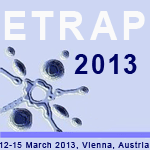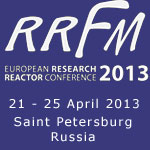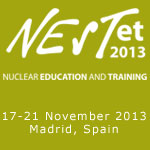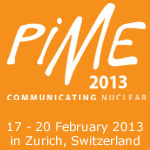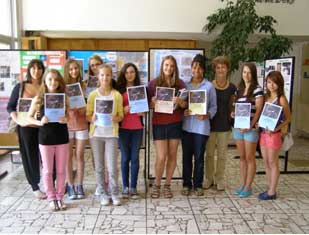
Physics and students
All of us “eternal” students experience very similar feelings at the end of the summer - a kind of urge to buy at least one new exercise-book and pencil and, for the most eager among us, the need to enrol in a new course. I am one of those eternal students. I have fond memories of my school years. “Learning is joy”, I used to tell to my fellow university student when she was sitting over textbooks with a deep frown of suffering on her forehead. She always looked at me with disbelief when I said this.
Professor Jana Camara, from the Grammar School in Metodova Street in Bratislava, recognised this endlessly positive attitude that I had retained for my school days and came with her students to visit the Slovak Hydro-Meteorological Institute during an Open Door Day. She listened to me talk about radioactivity and radioactive matters for a while and then invited me to come and share this knowledge with her physics students.
When I arrived at school one Friday afternoon, there was a holiday mood in the air. The professor told me that she was utterly exhausted from the school year and when I learnt about all the activities that she had carried out with her students, I could quite understand why. Among other things, together with her teacher colleagues, she had organised the Fyzikfoto photography competition. The results of the competition were displayed in the school lobby and I was astonished to find out the various different ways in which physics is taught. I recollected the suffering of my own children, often frustrated after physics classes and especially with one textbook in particular that was written in such a way that I myself was tempted to throw it out of window.
Professor Camara and her colleagues looked at things in a different way. Declining numbers of physics classes required remedial new approaches. New motivational methods had to be employed to make students understand physical phenomena that occur around us throughout our whole lives. Fyzikfoto allows competitors to choose from the many phenomena around us, conduct an experiment using all the available photographic IT and graphical design technologies available to us today and to present the results. Every step offers the chance to learn something new, to watch physics in practice. Nobody can simply avoid how the results of physics affect our everyday life. Nor can the young guy who doubted that a car stops when we lift our foot off the accelerator. He helped me to understanding the driving style of many young men – the “break/accelerator” method. Physics was not their favourite subject.
Winners were selected from arrange of different categories. Diplomas, books and presents were distributed. Nice, I thought, they are potential new members of “Women in Nuclear”.
|
And then we all got together in the auditorium and I started to talk about the beginning of radiation monitoring at the Slovak Hydro-Meteorological Institute, back in 1962. Although the motivation behind for the radiation monitoring carried out by the Institute was the cold war nuclear tests that took place at that time (which I mentioned during the opening part of my presentation), I concentrated my talk instead on the history of the exploitation of nuclear energy for civilian purposes, mentioning those people whose insatiable |
curiosity led to the discoveries that eventually gave rise to today’s cutting edge technologies. In conclusion, I hoped that that curiosity that is so natural among students would accompany them throughout their whole lives and that they would manage to find the answers to their questions. Professor Camara expressed her astonishment that I was able to keep them captivated and quiet for an hour and a half. Personally, my view is that when we you really get to the heart of the matter it can’t be anything other than interesting.
In the end the winners of the competition were announced and I took my leave, deeply convinced that if one really puts one’s heart into something, success will follow. I doff my hat to all teachers that have not yet lost the belief in the common sense of this simple principle.
Tereza Melicherová,
SNUS, Women in Nuclear and
Radiation Protection Sections
|

